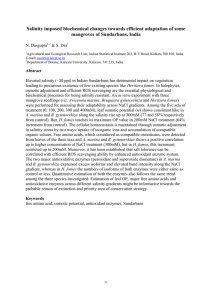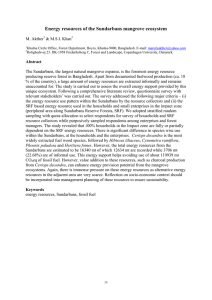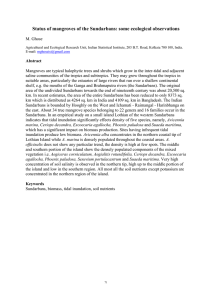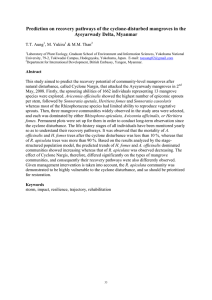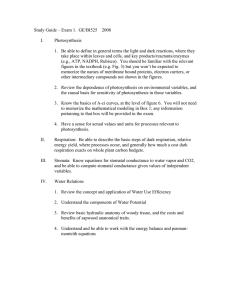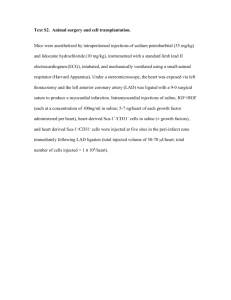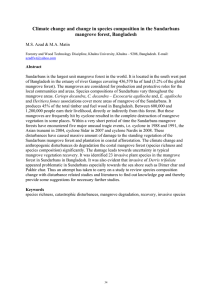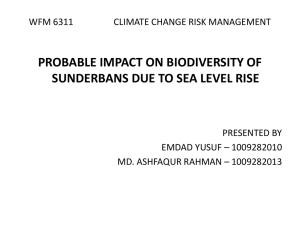Feasibility of reverse adaptation: physiological and biochemical approach
advertisement
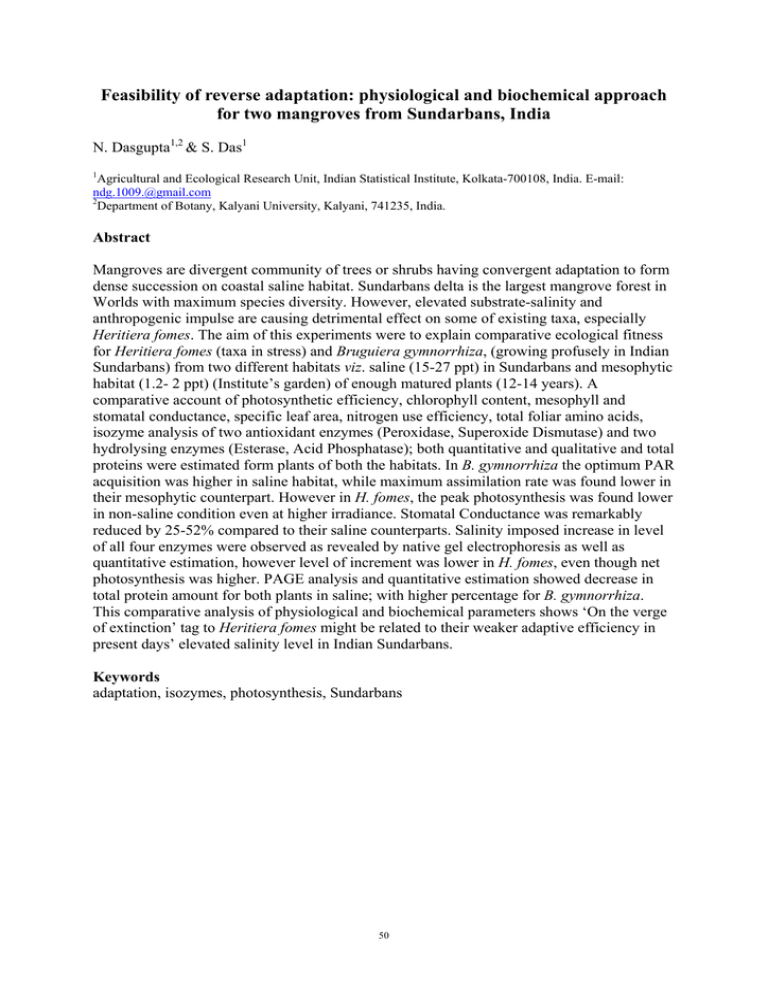
Feasibility of reverse adaptation: physiological and biochemical approach for two mangroves from Sundarbans, India N. Dasgupta1,2 & S. Das1 1 Agricultural and Ecological Research Unit, Indian Statistical Institute, Kolkata-700108, India. E-mail: ndg.1009.@gmail.com 2 Department of Botany, Kalyani University, Kalyani, 741235, India. Abstract Mangroves are divergent community of trees or shrubs having convergent adaptation to form dense succession on coastal saline habitat. Sundarbans delta is the largest mangrove forest in Worlds with maximum species diversity. However, elevated substrate-salinity and anthropogenic impulse are causing detrimental effect on some of existing taxa, especially Heritiera fomes. The aim of this experiments were to explain comparative ecological fitness for Heritiera fomes (taxa in stress) and Bruguiera gymnorrhiza, (growing profusely in Indian Sundarbans) from two different habitats viz. saline (15-27 ppt) in Sundarbans and mesophytic habitat (1.2- 2 ppt) (Institute’s garden) of enough matured plants (12-14 years). A comparative account of photosynthetic efficiency, chlorophyll content, mesophyll and stomatal conductance, specific leaf area, nitrogen use efficiency, total foliar amino acids, isozyme analysis of two antioxidant enzymes (Peroxidase, Superoxide Dismutase) and two hydrolysing enzymes (Esterase, Acid Phosphatase); both quantitative and qualitative and total proteins were estimated form plants of both the habitats. In B. gymnorrhiza the optimum PAR acquisition was higher in saline habitat, while maximum assimilation rate was found lower in their mesophytic counterpart. However in H. fomes, the peak photosynthesis was found lower in non-saline condition even at higher irradiance. Stomatal Conductance was remarkably reduced by 25-52% compared to their saline counterparts. Salinity imposed increase in level of all four enzymes were observed as revealed by native gel electrophoresis as well as quantitative estimation, however level of increment was lower in H. fomes, even though net photosynthesis was higher. PAGE analysis and quantitative estimation showed decrease in total protein amount for both plants in saline; with higher percentage for B. gymnorrhiza. This comparative analysis of physiological and biochemical parameters shows ‘On the verge of extinction’ tag to Heritiera fomes might be related to their weaker adaptive efficiency in present days’ elevated salinity level in Indian Sundarbans. Keywords adaptation, isozymes, photosynthesis, Sundarbans 50
